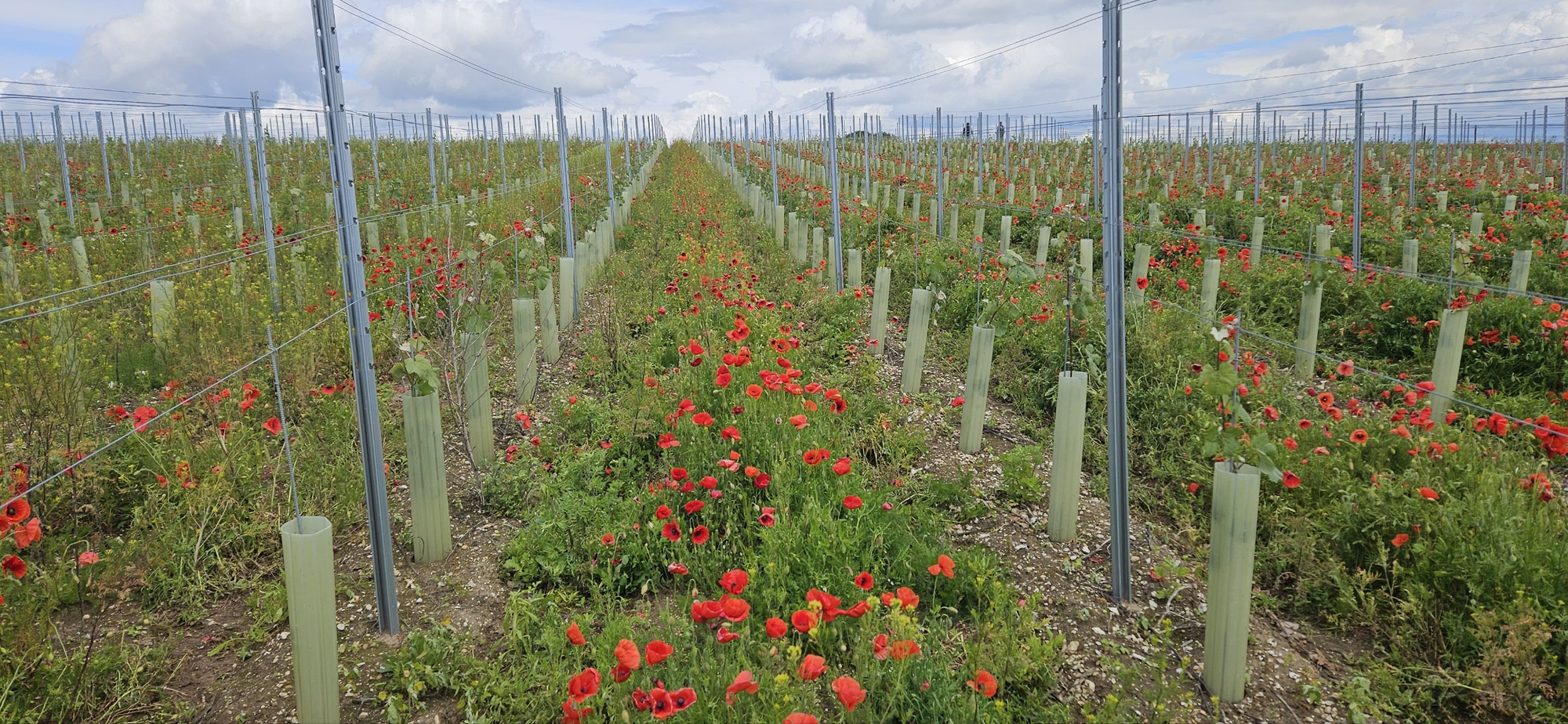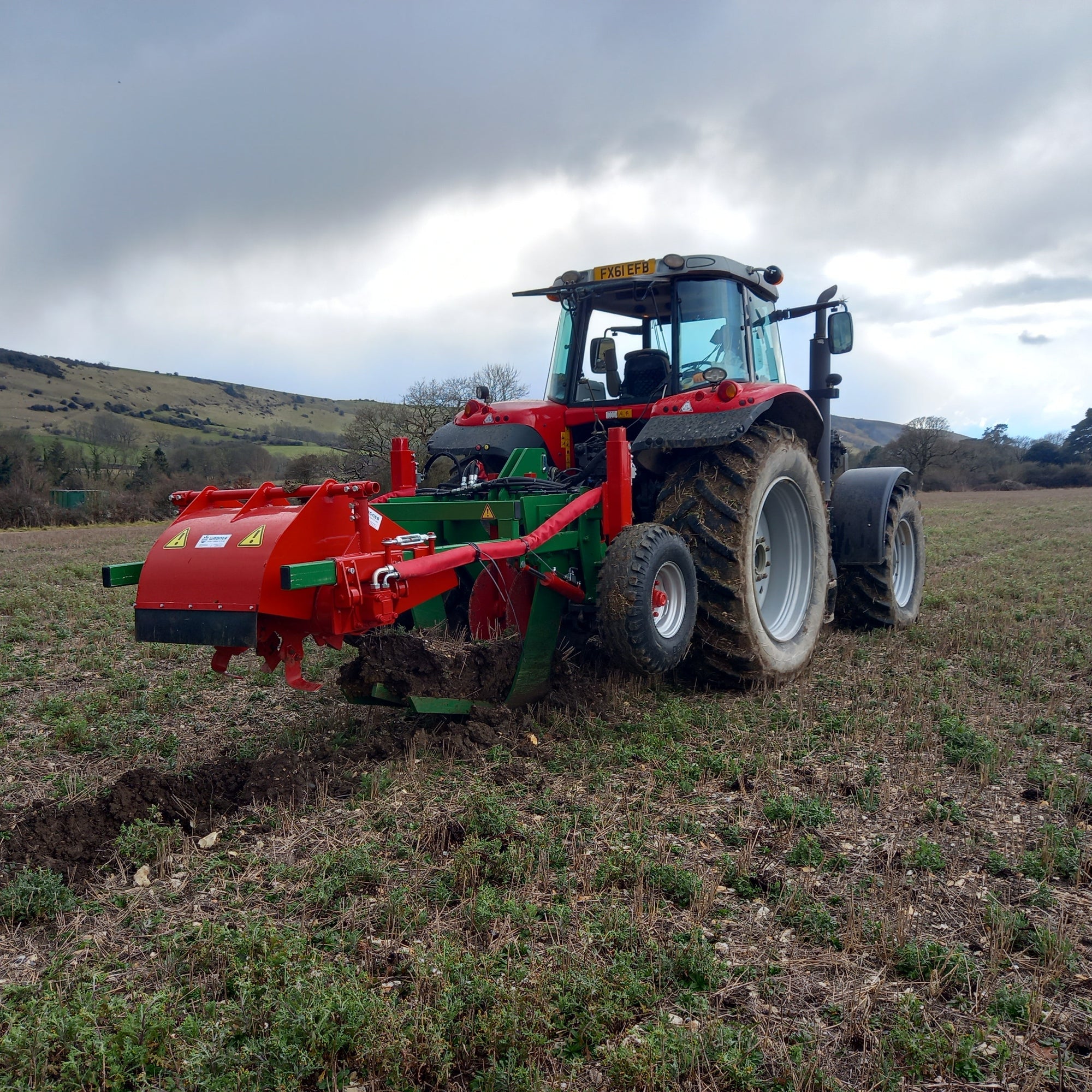

Using Cover Crops in UK Vineyards
Enhancing Soil Health for Sustainable Wine Production
While the UK’s climate presents both challenges and opportunities for grape growing, managing the soil beneath the vines is fundamental to producing healthy crops and high-quality wine.
Whether you’re converting part of your fruit farm to vines or managing an established vineyard, integrating cover crops is a cost-effective and sustainable strategy to support long-term soil vitality and vine performance.
Why Soil Health Matters
Soil is not just a medium to hold vine roots in place - it’s a living ecosystem teeming with microorganisms that play a vital role in vine nutrition, water management, and resilience against disease. Improving soil structure and biology through practices like cover cropping helps create an environment in which vines can thrive, particularly on the varied and often heavy soils found across much of the UK.
One of the most important soil properties to target is soil aggregation - the way soil particles bind together to form stable clumps or “aggregates.” Well-aggregated soils drain more efficiently, retain water better, and make nutrients more accessible to vine roots. Cover cropping is a powerful tool to help build these structures naturally
What Are Cover Crops?
Cover crops are non-cash crops sown between vine rows or post-harvest to provide living root systems in the soil. These plants, ranging from legumes and grasses to brassicas, perform a wide variety of functions - from adding organic matter to suppressing weeds and improving soil aeration.
Commonly in UK vineyards, low-growing grass seed mixes are grown as these provide a great balance between ease of management, soil-related benefits and cost of establishment. Other cover crops are being trialed in many vineyards around the country, but those with the greatest positive potential effect in the vineyard are often challenging and expensive to manage. However, depending on your vineyard goals and ground conditions there are a large variety of options available.
Key Benefits of Cover Cropping in Vineyards
- Improved Soil Structure
- Better Drainage and Water Retention
- Enhanced Nutrient Cycling
- Organic Matter and Carbon Input
- Weed and Erosion Control
- Increased Biodiversity
Choosing and Managing Cover Crops
There’s no one-size-fits-all solution when it comes to cover cropping. Each vineyard is unique, and so is the right mix of species. Trial and observation are key - what works on sandy loam in East Sussex may not suit chalk in Kent.
Here are a few popular cover crop families and what they offer:
- Legumes (e.g., clover, vetch): Nitrogen fixation, organic matter contribution.
- Grasses (e.g., ryegrass, oats): Biomass production, soil structure improvement.
- Brassicas (e.g., radish, mustard): Deep taproots for compaction relief, pest suppression.
Work with an agronomist or seed supplier to choose a mix tailored to your site goals - whether that’s improving drainage, reducing compaction, or building organic matter.
When and How to Sow
Cover crops can be sown in autumn, post-harvest, or in spring, depending on your objectives. Autumn sowing offers winter erosion protection and early season organic matter, while spring sowing may help address specific growing-season soil challenges.
Practical Considerations
Permanent grass cover may be easier to manage, especially in smaller or mechanised vineyards, but it typically delivers fewer benefits in terms of biodiversity and soil improvement. Rotating or interseeding with multi-species cover crops can provide a wider range of soil enhancements.
Some growers are also integrating controlled grazing of cover crops with sheep to manage vegetation and recycle nutrients. However, this must be done carefully to avoid soil compaction or damage to young vines.
Final Thoughts
Cover cropping is an increasingly important component of sustainable vineyard management in the UK. By supporting soil aggregation, improving drainage, boosting microbial life, and reducing the need for chemical inputs, it provides a strong foundation for healthy vines and better yields.
PUBLISHED IN FRUIT GROWER MAGAZINE, AUGUST 2025
Photo of cover crops © VineWorks 2024



